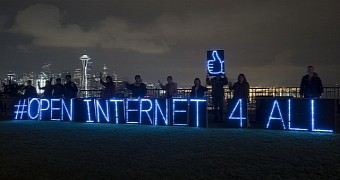The US Court of Appeals for the District of Columbia has rejected a request filed by a group of Internet providers to suspend FCC's new net neutrality rules.
Planned to take hold today, June 12, 2015, the new net neutrality rules were passed in February by the FCC (Federal Communications Commission) and backed by President Barack Obama.
These new rules prevent telecom and Internet providers from limiting access to websites or to fast broadband connections based on a fast-lane policy.
This means US users won't have to pay extra fees to access premium services, or benefit from faster loading speeds for particular websites.
The legal battle is not over yet
While this seems fair to everyone involved except the telecom industry, companies like AT&T, Comcast, and Verizon have argued that the FCC can't pass this kind of rules, being over their regulatory powers.
These companies previously filed a petition with the FCC to take down the new net neutrality rules in May, but this was rejected soon after.
The current appeal was only for a temporary suspension of the net neutrality rules, which the three-judge panel rejected. A full trial for a permanent ban on the FCC's rules is expected to take place later this year.
Net neutrality supporters should not get their hopes up just yet, since temporary injunctions on a law's applicability are usually judged in haste, and the real hurdle should be the trial scheduled for the end of the year.
In a statement on the FCC's website, the commission’s Chairman Tom Wheeler had the following to say: “This is a huge victory for Internet consumers and innovators! Starting Friday, there will be a referee on the field to keep the Internet fast, fair and open.”
Furthermore, “Blocking, throttling, pay-for-priority fast lanes and other efforts to come between consumers and the Internet are now things of the past. The rules also give broadband providers the certainty and economic incentive to build fast and competitive broadband networks.”

 14 DAY TRIAL //
14 DAY TRIAL //